
How to Use Voice recognition module: Examples, Pinouts, and Specs
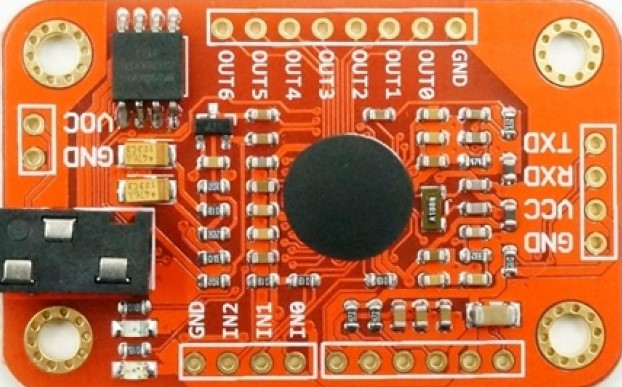
 Design with Voice recognition module in Cirkit Designer
Design with Voice recognition module in Cirkit DesignerIntroduction
The Voice Recognition Module is a sophisticated electronic component designed to interpret spoken commands, enabling users to interact with their projects through voice. This module is particularly useful in applications such as home automation systems, voice-activated controls, and interactive robotics. By integrating this module into your projects, you can create hands-free interfaces and enhance user accessibility.
Explore Projects Built with Voice recognition module
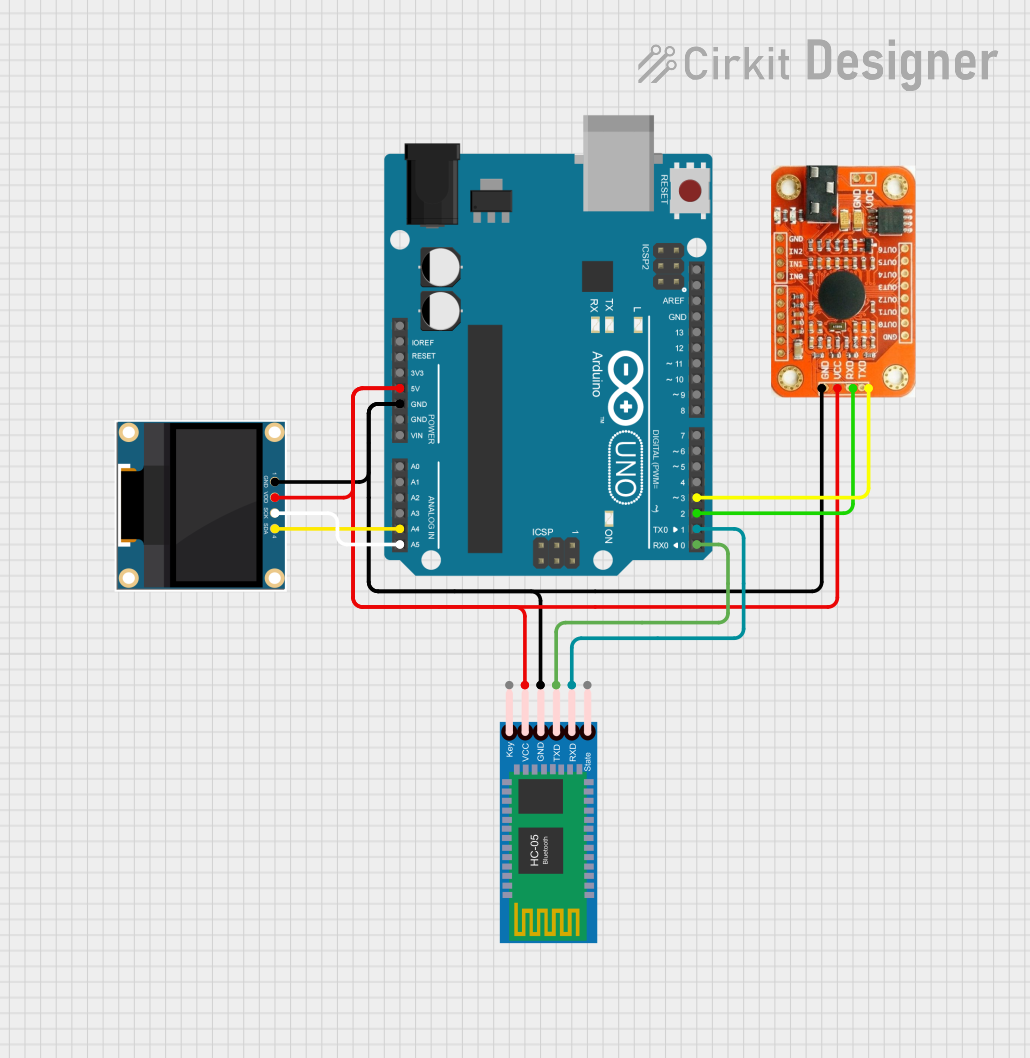
 Open Project in Cirkit Designer
Open Project in Cirkit Designer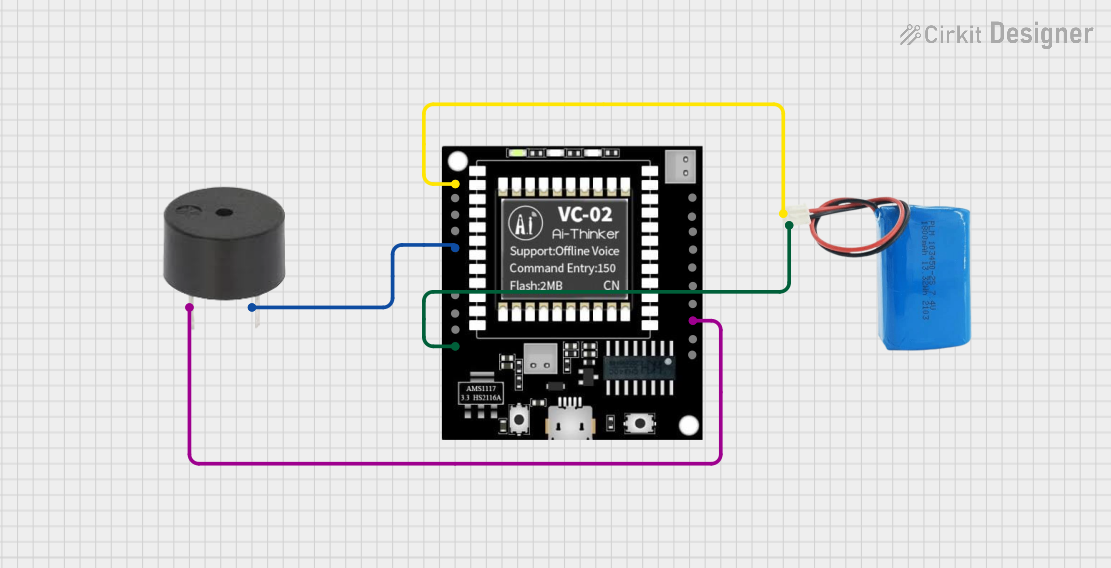
 Open Project in Cirkit Designer
Open Project in Cirkit Designer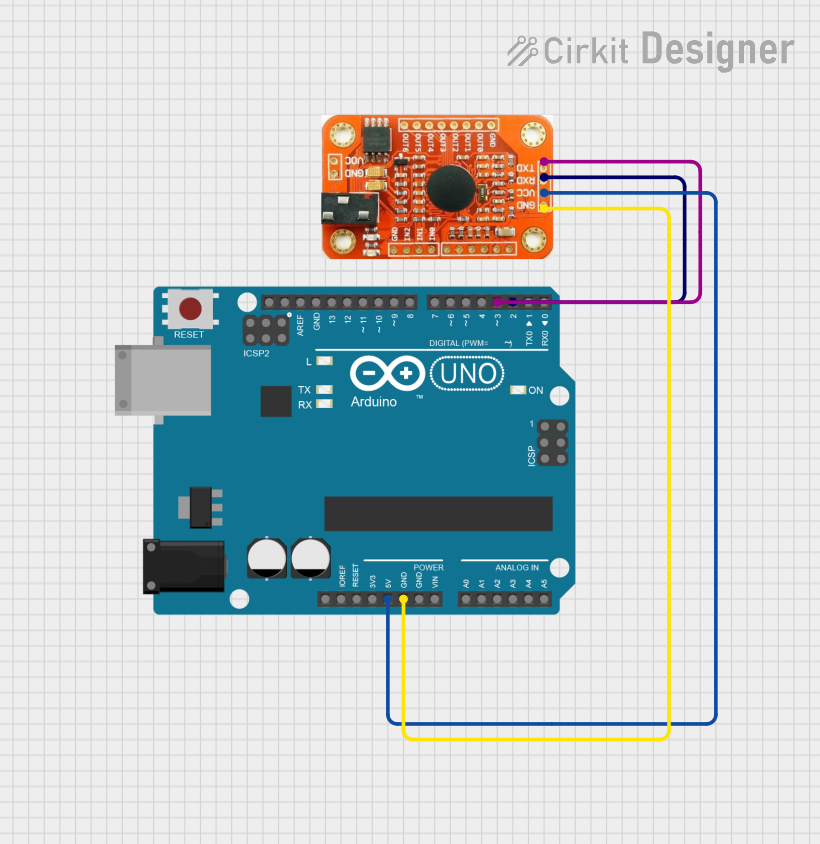
 Open Project in Cirkit Designer
Open Project in Cirkit Designer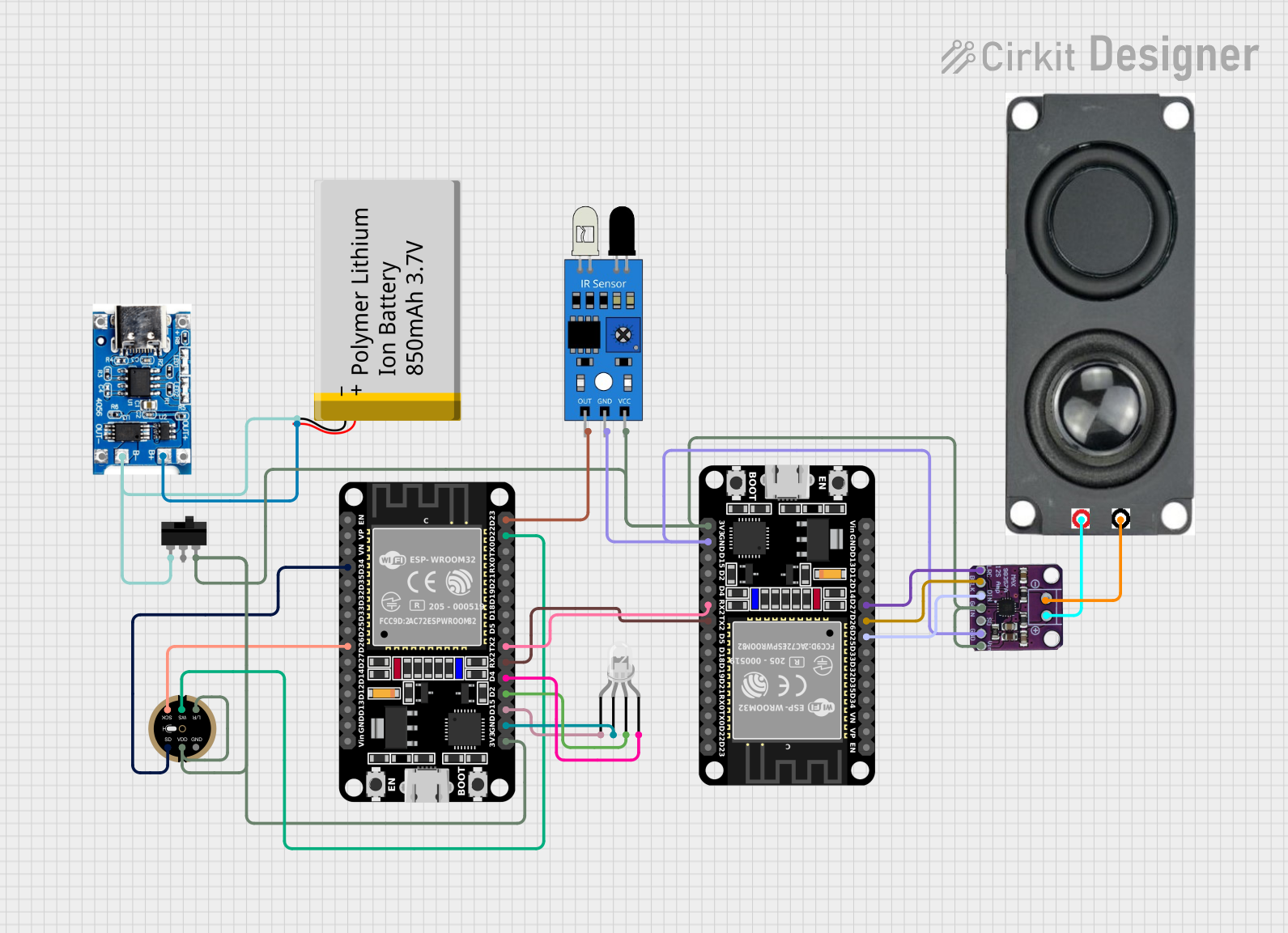
 Open Project in Cirkit Designer
Open Project in Cirkit DesignerExplore Projects Built with Voice recognition module

 Open Project in Cirkit Designer
Open Project in Cirkit Designer
 Open Project in Cirkit Designer
Open Project in Cirkit Designer
 Open Project in Cirkit Designer
Open Project in Cirkit Designer
 Open Project in Cirkit Designer
Open Project in Cirkit DesignerTechnical Specifications
General Features
- Operating Voltage: 4.5V - 5.5V
- Current Consumption: ~40mA (during recognition)
- Recognition Accuracy: High with proper training
- Microphone: Onboard, with the possibility of connecting an external one
- Interface: UART/Serial
Pin Configuration and Descriptions
| Pin Number | Pin Name | Description |
|---|---|---|
| 1 | VCC | Connect to 5V power supply |
| 2 | GND | Connect to ground |
| 3 | TX | Transmits data to the microcontroller (connect to RX) |
| 4 | RX | Receives data from the microcontroller (connect to TX) |
Usage Instructions
Interfacing with Arduino Mega
Connecting the Module:
- Connect the VCC pin to the 5V output on the Arduino Mega.
- Connect the GND pin to one of the GND pins on the Arduino Mega.
- Connect the TX pin of the module to the RX pin (Serial1, Serial2, or Serial3) on the Arduino Mega.
- Connect the RX pin of the module to the TX pin (Serial1, Serial2, or Serial3) on the Arduino Mega.
Programming the Arduino:
- Open the Arduino IDE and select the correct board and COM port.
- Use the following sample code to initialize the voice recognition module and set up basic voice command recognition.
#include <SoftwareSerial.h>
// Use one of the additional hardware serial ports on the Mega
// For example, Serial1 on pins 18 (TX) and 19 (RX)
#define VoiceSerial Serial1
void setup() {
// Start the hardware serial port at 9600 baud
VoiceSerial.begin(9600);
}
void loop() {
if (VoiceSerial.available()) { // Check if there is data from the module
String voiceCommand = VoiceSerial.readStringUntil('\n'); // Read the command
// Implement your voice command handling logic here
if (voiceCommand == "turn on") {
// Code to turn on a device
} else if (voiceCommand == "turn off") {
// Code to turn off a device
}
// Add more voice command conditions as needed
}
}
- Voice Command Training:
- Follow the manufacturer's instructions to train the module with specific voice commands.
- Ensure a quiet environment for accurate voice recognition during training.
Best Practices
- Use a stable power supply to prevent erratic behavior.
- Avoid background noise during both training and normal operation.
- Place the microphone close to the user for better voice capture.
- Implement debounce logic in the code to handle unintentional repeated voice commands.
Troubleshooting and FAQs
Common Issues
- Module not recognizing commands: Ensure that the module has been properly trained with the commands and that the environment is similar to the training conditions.
- Serial communication errors: Verify that the TX and RX pins are correctly connected and that the baud rate matches the module's default setting.
FAQs
Q: Can I use an external microphone with the module?
- A: Yes, the module typically supports connecting an external microphone if better audio capture is needed.
Q: How many commands can the module recognize?
- A: This depends on the specific model of the voice recognition module. Refer to the manufacturer's datasheet for the exact number.
Q: Is it possible to change the baud rate of the module?
- A: Some modules allow baud rate configuration. Check the module's documentation for instructions on how to change it.
Remember to consult the manufacturer's datasheet and user manual for more detailed information and advanced configuration options.